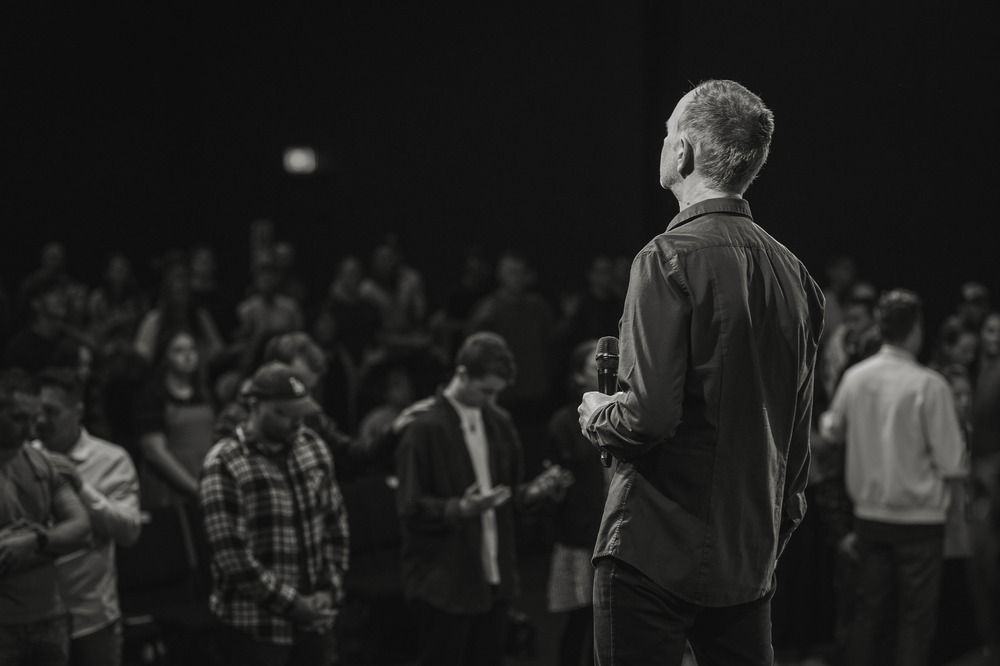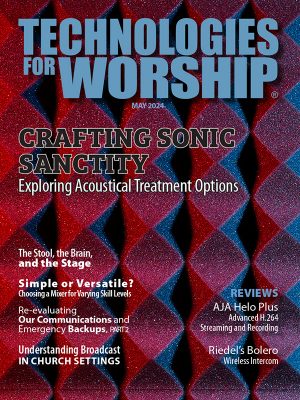
During worship, where every nuance plays a key role in driving the atmosphere of the message, stage lighting angles take on a profound significance. Understanding the intricacies of illuminating not just performances but also pastor messages during worship is essential. This basic overview explores the key principles, techniques, and considerations for achieving a harmonious blend of light and spirituality in worship settings.
Basics Stage Lighting Angles
Front Lighting
Front lighting illuminates the pastor from the front to ensure clear visibility of facial expressions and nuances. Adjust intensity to maintain a warm and inviting ambiance, facilitating a connection between the pastor and the congregation. Ensure even coverage to prevent harsh shadows and provide clarity to the audience.
Back Lighting
Employ gentle back lighting to subtly emphasize the pastor’s presence on stage, adding depth and separation from the background. Ensure the backlighting adds a halo effect without causing distraction.
Side Lighting
Implement soft side lighting to highlight the contours of the pastor and create a visually appealing three-dimensional effect. Keep side lighting subtle to avoid harsh shadows, fostering a calm and focused atmosphere.
Top Lighting / Down Lighting
Illuminate the pastor from above to convey a sense of authority and spiritual presence. Fine-tune top lighting angles to prevent shadows on the face, maintaining a natural appearance.
Bottom Lighting / Uplighting
Light directed from below enhances textures and adds an unconventional, dramatic flair.
Exercise caution to prevent unflattering shadows and maintain a visually appealing balance.
Techniques for Effective Stage Lighting Angles
Cross-lighting
Blend front and side lighting from opposite directions to minimize shadows and present the pastor with a warm and engaging glow while at the same time providing comprehensive coverage. However, make sure to ensure the cross-lighting technique enhances the pastor’s visibility without overpowering the overall ambiance.
Rim Lighting
Placing lights behind the pastor or performers on stage introduces subtle rim lighting to create a radiant aura around the pastor and separating them from the background. Adjust rim lighting intensity to evoke to avoid overexposure without overshadowing the spoken message.
Dynamic Lighting Transitions
Implementing dynamic changes in lighting angles during different segments of the pastor’s message will help signify transitions or key moments. Ensure lighting transitions align with the emotional tone of the message, adding a layer of visual storytelling and creating a cohesive experience.
Considerations for Pastor Messages During Worship
Prioritize a lighting setup that fosters a connection between the pastor and the congregation.
You should test different lighting angles to gauge their impact on fostering engagement and attentiveness.
Tailor lighting angles to contribute to the spiritual atmosphere of the worship space. Collaborate with lighting designers to align the lighting design with the overarching theme of the worship service.
Design lighting configurations that can adapt to various elements, such as prayers, reflections, and scripture readings, during pastor messages. Ensure the lighting setup complements the diverse elements of the worship experience without distraction.
Technical Aspects of Stage Lighting Angles for Worship
Fixture Placement is paramount! Strategically position fixtures to maintain clarity in the pastor’s visibility without causing glare or obstructing sightlines. Make sure to test and adjust fixture angles during rehearsals, prioritizing clear sightlines for the congregation.
Pay careful attention to the color temperature of light sources to create a harmonious visual environment. Experiment with color gels to evoke specific moods or enhance the spiritual tone of the worship setting.
Leverage shadows and highlights to create depth and dimension in the visual composition. Balance shadow intensity to prevent distracting contrasts that may detract from the performance.
Collaborative Approach and Communication
Foster collaboration between worship leaders, pastors, and lighting designers to articulate the spiritual vision of the service. Maintain open communication channels to address any adjustments needed during rehearsals.
Discuss lighting angles with pastors to understand their preferences and encourage pastors to provide feedback on the lighting setup, fostering a collaborative and cohesive worship experience.
Adaptability and Rehearsals for Worship Lighting
Your lighting designer should dedicate time during rehearsals to fine-tune lighting angles based on the specific needs of each worship service. Continuously assess and adjust the lighting to achieve the desired visual impact, especially during pastor messages.
In worship spaces, where words transcend the mundane, the interplay of light assumes a sacred role. Crafting lighting angles for pastor messages during worship involves a delicate dance, where each beam is a brushstroke. A carefully orchestrated play of light not only illuminates the pastor’s presence but also elevates the spoken word, creating an atmosphere where congregants are not just observers but participants in worship.




